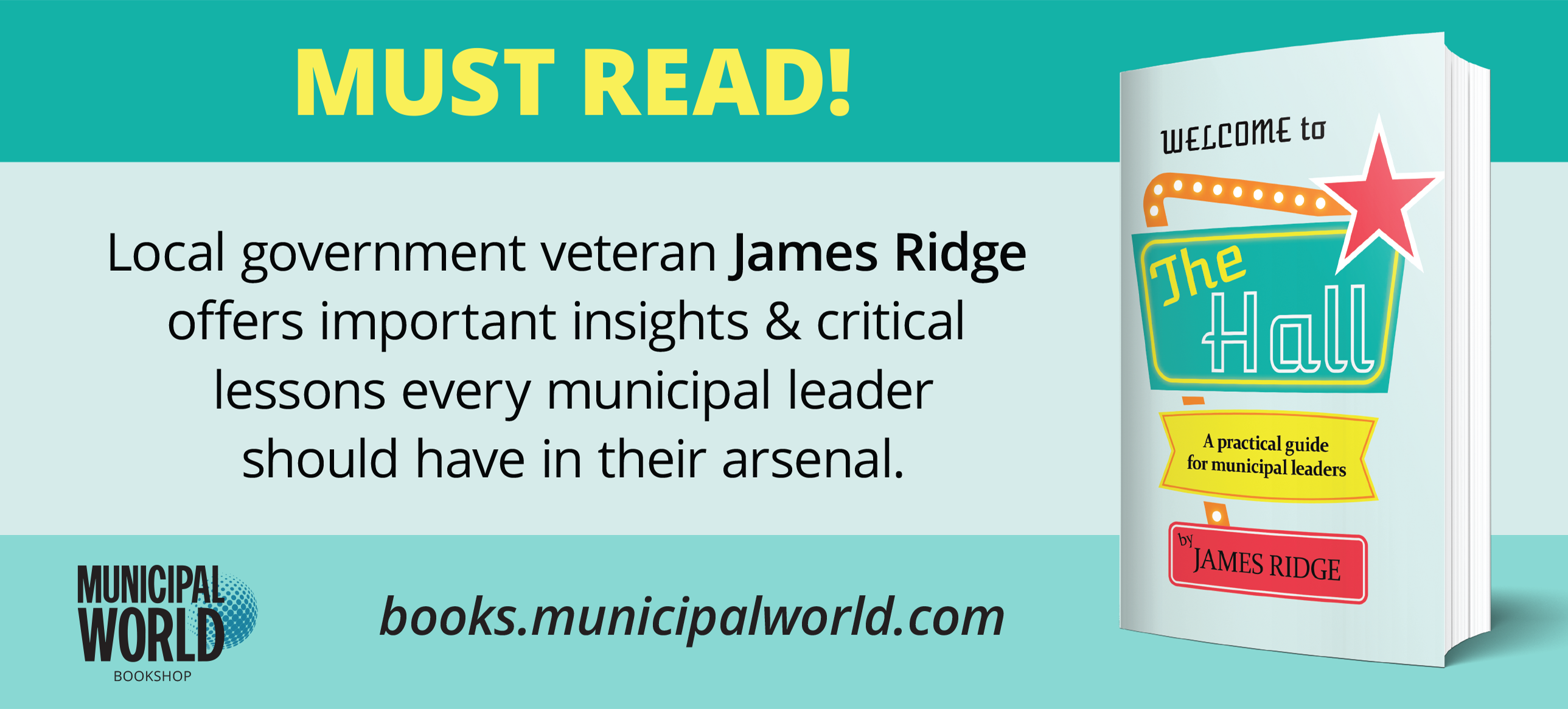Why 0% tax increases cost so much

Short-Term Gain, Long-Term Pain
In 1986, I attended the Western Canada Water and Sewage Conference in Calgary. A comment by the keynote luncheon speaker, a city councillor, will always stay with me. She said, “Always remember that a politician has one job and one job only. That is to get re-elected.”
While that comment was somewhat tongue-in-cheek, there is some truth to it. In larger urban centres, the position of municipal councillor is a full-time job, a career. In small-town and rural communities, it is a part-time position job, often requiring full-time hours! In all cases, though, municipal politicians ultimately want to achieve the same thing: a better community, even if only on a single issue. These goals cannot be achieved if they don’t get re-elected.
How do they get re-elected? Well, everyone hates taxes and almost every politician promises lower taxes. Many elections are won or lost on taxation. Is lower taxation really a benefit to the taxpayer? The short answer must be, “Yes.” But, is the short answer really the long-term solution?
I remember my first term as a municipal councillor. Why? Because my first budget, only months after being elected, required an almost double-digit tax increase following three years of zero percent tax increase. The large tax increase didn’t allow us to do anything more than “catch-up” with the deferred maintenance and works from the previous years. This is something that we see repeated numerous times, across many municipalities. At an assumed inflation rate of two percent, holding taxes to zero really results in a two percent tax decrease. All too often, this is really short-term gain for long-term pain, as there is no alternate income source or reduction in service. The solution is often the reduction in maintenance budgets or deferral of major capital works. What happens when the reduction in maintenance results in the failure of the asset (equipment or municipal building)? The answer is higher taxes to pay for emergency repairs or replacement. What happens when the deferred works must be done? The result is higher taxes to do the now “pancaked” works that should have already been done.
For years I’ve heard, “A municipality should be run like a business!” But, this is only partially correct. A business has one responsibility, provide a financial return to investors. A municipality, however, is not a business. It is a non-profit organization providing those services that its shareholders (ratepayers) want. For upper-tier and single-tier municipalities, there is a significant (downloaded) social service responsibility. Usually, those services (and others, such as arenas or public transit) cannot break-even, let alone run a surplus, if they are to be affordable. As a result, they require continuous operating fund (tax) contributions to remain viable. Also, as its assets age, each municipality must find that balance between reserve fund contributions and debenture financing to maintain its assets. Otherwise, the assets deteriorate to the point of requiring expensive “unexpected” emergency repair/replacement.
In this discussion, one must realize that a municipality’s most valuable asset is its staff – even though its most expensive asset may be hard infrastructure, like roads or a water treatment plant.
Considering the above, it is critical for the long-term sustainability of a municipality that it not be run like a business but, rather, employ sound business practices. In other words, a municipality must be managed responsibly.
Let’s break the municipal operation into five standard business operating aspects for consideration:
- risk management;
- best practices;
- life-cycle costing;
- long-term budget planning; and
- cheaper in the long run.
1. Risk Management
Responsible management is really risk management.
Risk management can be described as the culture, processes, and organization that help a business to evaluate risk, assess its potential impact and plan the appropriate action to take in order to avoid or control risk by the most economical means. It is not possible or desirable to eliminate all risks, the objective is to implement cost effective processes that reduce risks to an acceptable level, reject unacceptable risks, and transfer other risks through insurance and other means.1
Risk management is really a decision to accept exposure or to reduce vulnerabilities by either mitigating the risks or applying cost effective controls.2 Risk management controls costs (which means that it controls taxes and controls user fees).
Risk management is a standard business practice that reduces the need for “crisis management.” The taxpayer wants government to be run more like a business. Risk management keeps taxes as low as possible (not low, but as low as possible) by managing an efficient operation.
2. Best Practices
Managing the municipal corporation responsibly involves the implementation of best practices. Best practices represent proven methodologies for consistently and effectively achieving a business objective. Whereas a business process is simply a series of activities organized to achieve a specific business objective, a best practice is a business process with demonstrated ability to achieve superior results.
What is a Business Process? It is a set of activities or processes that every business relies on to function. A manufacturing business obtains raw materials, creates a product, and delivers that product to customers. A service business hires the right service providers, trains them, and sends them out to serve customers. Countless business processes within each organization carry these operations forward smoothly, and when all goes well, profitably.
According to the American Productivity & Quality Center, the three main barriers to adoption of a best practice are:
- a lack of knowledge about current best practices;
- a lack of motivation to make changes involved in their adoption; and
- a lack of knowledge and skills required to do so.
This relates directly to managing the municipal staff asset. Staff must be given the ability to improve by education, workshops, and conferences, so that they are aware of ongoing municipal best practices and bring those concepts back home. So often, tax cutting starts with the elimination of staff education, which can actually cost money in the long term. Council should be considered as a staff asset as well. If the directors of a corporation are not aware of the basic concepts of best practices, how can they be relied upon to manage the corporation successfully?
Employing best practices means that taxes can be kept as low as possible (not low, but as low as possible) by managing an efficient operation.
3. Life-Cycle Costing
Life-cycle cost analysis is a method of calculating the cost of an asset over its entire useful life span and budgeting for it. It includes such costs as planning and concept design, design and development costs, maintenance costs, and disposal costs. This concept is reflected in the PSAB 3150 compliance exercise that all Ontario municipalities recently went through. It can also apply to the employment span of municipal staff asset in terms of providing enough personnel adequately trained and motivated to do the job.
Managing municipal assets responsibly is really full life-cycle costing and budgeting. The taxpayer wants government to be run more like a business. Life-cycle costing is an efficient business practice that manages long-term costs so that taxes can be kept as low as possible (not low, but as low as possible) by managing an efficient operation.
4. Long-Term Budget Planning – Costs Annualized
So, where are we now? We know that we are managing the risk; we know that we are using the best practice available in operation/maintenance and management of the municipality; we know the real or life-cycle cost of the assets. So what can we do with that?
Well, we can use that information to undertake long-range capital planning with annualized costs. We are in a position to undertake five-, 10- and 20-year capital and operational budgeting on the major assets, including staff.
We can establish reserve funds to manage deficit financing of major projects. We can extend the life of the asset because we know when (approximately) major rehabilitation can be undertaken to do so. Reserve fund contribution also allows us to take advantage of federal/provincial funding opportunities. We know when to expect upgrading or replacement. Remember, this also applies to staff training and retirement/replacement. The best thing about that is: no surprises!
With long-term planning and annualized cost, we can slowly build reserves with the gradual increase of user fees and/or taxes, in preparation for the major costs. Taxpayers (voters) are far more receptive to an annual increase of, say, three percent, than a 15 percent increase every five years because they, too, can do long-term budgeting to cover the costs.
Not only are long-term budgeting and annualized costs good business practices – they are also things that taxpayers can relate to their own financial management. Long-term planning is an efficient business practice that manages costs. Undertaking long-term budget planning therefore means that taxes can be kept as low as possible (not low, but as low as possible) by managing an efficient operation.
5. Cheaper in the Long Run!
Managing municipal assets responsibly allows for the anticipation of major capital and operational costs. It indicates when money must be spent to prolong an asset’s service life and when it needs to be replaced. It also indicates when to increase staff to properly maintain the asset. It indicates that a little bit of money over a longer period of time maintains an acceptable level of service and extends the life of the asset. That means it’s cheaper in the long run!
Considering everything that we’ve touched upon, managing municipal assets is really the responsible stewardship of the public assets and, therefore, the public purse. It is the sum of several standard or best business practices that minimize the risk; achieve superior results in the operation/management of the corporation; eliminate (or at least minimize) major expensive surprises; manage deficit financing; allow for long-term planning; and allow for small but regular increases in taxes/user fees over time, instead of big (election-losing) increases. It will free up money to build those parks, arenas, and libraries.
Managing a municipal corporation isn’t only about low taxes. It’s about progressive leadership that allows for the intelligent and efficient operation of a multi-million dollar corporation serving the ultimate customer, the ultimate shareholder: the taxpayer. MW
as published in Municipal World, April 2012
1 Australian Better Business Insurance.
2 University of Texas, Medical Branch.
NORMAN SANDBERG, CET graduated from the Resources Engineering Technology programme at Georgian College in 1986. He was a four-term councillor in the Town of Collingwood, past-chair of the Ontario Small Urban Municipalities and former president of the Association of Municipalities of Ontario.



